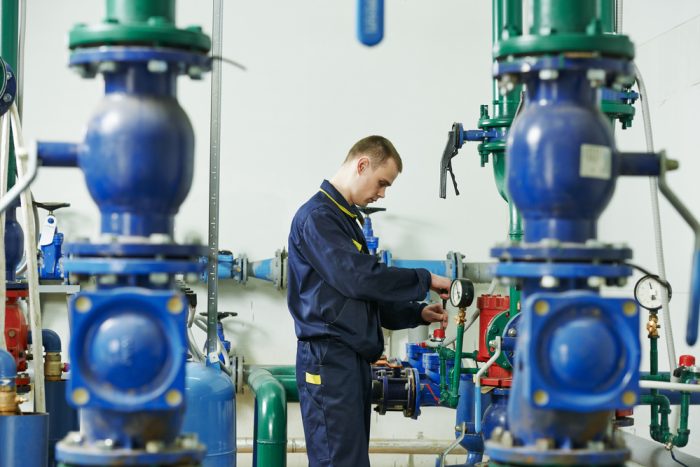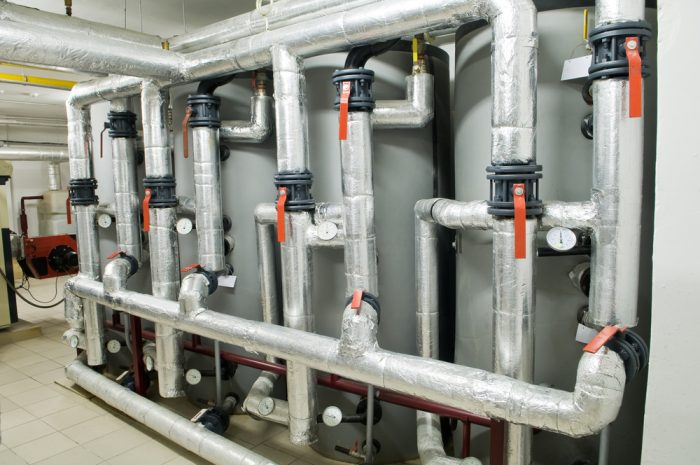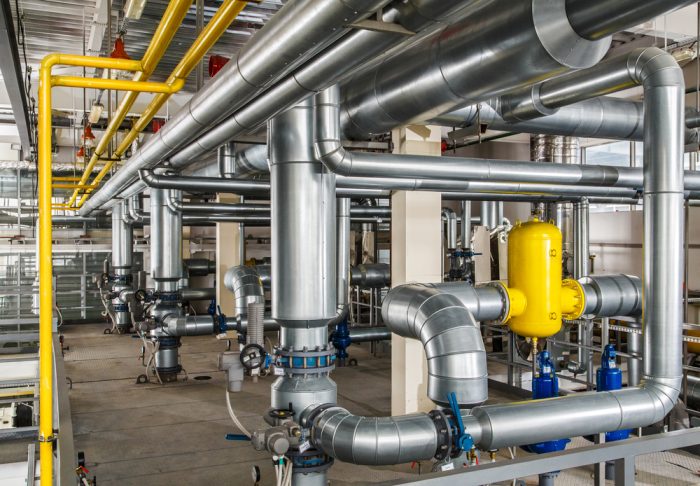No products in the cart.
Work From Home
How to Increase Boiler System Efficiency in Your Facility
Home Business Magazine Online
Every business owner strives to save money in as many ways as they can. After all, the money they save is money they earn. This philosophy is especially true for those managing processing and manufacturing plants where expenses are sky-high. Using cheaper raw materials, buying energy-efficient appliances, and automating specific tasks are some of the best ways. Suppose you want to keep your plants or offices warm in colder temperatures or power your machines. If you’re willing to go all the way to save money, a boiler system is always an excellent choice. (1)
What is a boiler system?
A boiler is a piece of equipment that heats water and other types of liquid to generate steam or vapor as a byproduct. The boiler system then uses these resources for various purposes, such as heating and power generation, both crucial in industrial facilities. That’s why boiler systems are standard in most manufacturing and processing plants. (1)
Keep in mind that there are several types of boiler systems, all of which have varying purposes and advantages. Moreover, a boiler consists of parts other than the actual boiler, such as feed pumps. That said, here are 7 facts about boiler feed pumps so you can learn more about this specific component.
One factor common among each type is that their performance or efficiency may vary according to various factors. This article aims to tackle these factors and how you may manipulate them to increase the efficiency of your facility’s boiler system.
1. Tune the Boiler’s O₂ Output Regularly
The air-to-fuel ratio (AFR) is one of the factors you must consider when managing a boiler system. It’s the amount of air you need to burn a specific fuel type. Boiler operators typically use a formula to calculate the optimal amount. For example, the ideal AFR for gasoline in car engines is 14.7:1. Therefore, the machine must use 14.7 grams of air to burn all gasoline without wasting air for every gram of fuel. But of course, in the case of boiler systems, the AFR may vary considerably depending on the fuel you use.
Boiler tuning is essentially the practice of maintaining an optimal AFR in the boiler system. Its main goal is to ensure the boiler performs adequately without wasting excess air. Besides minimizing O₂ output and reducing production costs, boiler tuning is also an excellent way to maximize a boiler’s lifespan, as it prevents the machine from overworking itself.
In conclusion, boiler tuning is a necessary maintenance procedure, especially if you want to increase the system’s efficiency. Unfortunately, there’s no standard procedure when tuning a boiler system. It depends entirely on the design and the type of fuel it uses. However, no matter what kind of boiler you use in your facility, the procedure would likely include the following steps: (2)
- step 1: Insert an oxygen (O₂) probe on the boiler stack to monitor the O₂ readings.
- Step 2: Turn on the burner and put it into manual mode.
- Step 3: A good O₂ reading would be 10% (2.2% O₂), though the system may have a different output than that. At best, you may get a rate of 25%, which is too high. (3)
- Step 4: Increase the firing rate of the system incrementally while observing the flame until you achieve your goal, which should be to make it as close to 10% as possible. (2)
That’s the standard procedure for tuning, though it’s much more complex than that. For this reason, experts suggest contacting the boiler manufacturer before making adjustments. However, if you have qualified personnel, doing it in-house should be fine. Otherwise, you may need to outsource these services or seek them from the manufacturer or other agencies. (3)
Also, it’s worth noting that tuning must be done regularly, preferably during season changes, such as when spring or fall comes. This is because there’s a drastic change in air density and temperature during these seasons. Hence, a tune-up is necessary to keep the system up to speed.
Another way to figure out if your system needs a tune-up is the color of the flame. For example, blue fire means there is enough air to burn all the combustion gas. On the other hand, if the fire is red, yellow, or orange, it might mean your system is emitting carbon monoxide (CO). While this type of gas will always be present in most boiler systems, it usually comes in negligible amounts.
However, a non-blue fire implies there’s a significant amount of CO in the system, which would mean one thing — increased risk of poisoning in the facility and low efficiency.
2. Clean the boiler regularly
Considering the mechanism of boilers, it’s only natural to assume that temperature would be one of the many factors that affect the efficiency of a heating machine. And that’s precisely the case.
Stack temperature, also known as flue gas temperature, is the unit measure for the temperature of the gas as they leave or exit the boiler. A high stack temperature means the system is losing a significant amount of heat as it only ends up leaving the boiler. Unfortunately, reducing the temperature is not as simple as using a remote control and pressing several buttons. (4)
Unlike O₂ output, which you can manually change with the control system, you can’t directly interact with temperature. But it should be possible to manipulate stack temperature indirectly.
You can start by setting up a schedule to clean your boiler tubes. When the gases leave the system, it moves throughout the combustion of your facility via the tubes. If the lines are dirty, it likely has soot or mineral build-up, which may affect the heat transfer of combustion gases. In turn, this build-up eventually affects stack temperature negatively. It reduces the efficiency of your boiler system, but it also causes unnecessary wear to the equipment. Therefore, cleaning the boiler regularly is always an essential procedure. (4)
For your reference, the optimum stack temperature is 350°F. In other words, you should aim to get your boiler system’s stack temperature to be as close to this number as possible.
3. Lubricate Its Components Regularly
Like most mechanisms, a boiler system consists of many other parts apart from the boiler itself. These may include the pumps, burner, exhaust stack, combustion chamber, and pipes.
Each of these components plays a vital role in the unit. Otherwise, they wouldn’t be part of the system. If one part malfunctions, the system would experience a slight decrease in efficiency at best. At worst, the system may stop functioning altogether. Either way, it’s a bad outcome in terms of the boiler system’s efficiency. That’s why lubrication is essential. The primary purpose of lubrication is to minimize the friction between two surfaces when they come in contact with one another. It’s beneficial for moving parts of a mechanism. (5)
Though not all parts move constantly, a boiler system still consists of several moving parts, such as the feedwater pumps. By lubricating these parts regularly, you’re effectively reducing the likelihood of the entire system experiencing setbacks, which is one way to improve its efficiency. One more benefit to lubricating your boiler system’s parts is that lubrication is an excellent way to prevent dust, dirt, and other types of grime from accumulating on a surface.
4. Consider Installing an Economizer
Economizers are components that can transfer heat from flue gas to a different medium, such as boiler feedwater — a form of liquid in boilers that turns into steam given enough heat. (6)
Economizers capture the heat from combustion gases that otherwise leave the system and add to the stack temperature. It then redirects the heat into the boiler feedwater to increase its temperature instead. That’s precisely why boiler operators also call economizers the flue gas heat recovery unit — they recover heat that the system would otherwise lose. Keep in mind that you can fit economizers during and after boiler system installation. That way, it should be possible to add one to your existing system anytime if you have yet to do so.
5. Use a different type of natural gas
A boiler system typically uses natural gases as fuel to produce steam or water vapor. These natural gases consist of several components, methane being the most prominent, followed by hydrogen.
While natural gases do have similar structures, the proportions of their components may vary depending on your source or supplier. Some may have vast amounts of hydrogen, while others have almost none. Ideally, you’d want to use natural gases with lower proportions of hydrogen since it typically converts into the water during the combustion process. And if you recall from your science class, water is inherently energy-hungry, meaning it absorbs energy quite quickly. (7)
This means the energy that would have been better used for other purposes would be absorbed unnecessarily by the water formed due to the combustion of hydrogen molecules. Therefore, make sure it has higher methane concentrations and lower hydrogen molecules when using natural gases. That way, water wouldn’t monopolize the energy.
Final Words
While boiler systems are challenging to operate and maintain, they’re one of those investments where you’ll reap numerous benefits when you manage to make it work for your facility. It can save you money, but it also helps with the workflow of your manufacturing and processing plants. Not to mention, you can further increase its efficiency, as shown in this article, though keep in mind that you’ll need the help of a professional boiler operator when using these tips.
References
- “WHAT IS A BOILER AND HOW DOES IT WORK?” sources: https://realpars.com/boiler/
- “Basic Boiler Tuning Tips”, source: https://econtrol.com/2019/12/22/basic-boiler-tuning-tips/
- “Best Practices for Combustion Efficiency/Fuel Air Ratio”, Source: https://www.swagelok.com/~/media/Distributor%20Media/CG/Chicago/Services/ES%20-%20Combustion%20Efficiency_BP_4.ashx
- “Shawn’s Tip Of The Week: Monitor Stack Temperatures To Schedule Cleanings Strategically”, Source: https://www.logcheck.com/shawns-tip-of-the-week-monitor-stack-temperatures-to-schedule-cleanings-strategically/
- “Boiler Maintenance: A Guide to the Process and Its Benefits”, Source: https://www.oil4wales.co.uk/boiler-maintenance-a-guide-to-the-process-and-its-benefits/
- “Boiler Economizers”, Source: https://www.nrcan.gc.ca/maps-tools-and-publications/publications/minerals-mining-publications/publications-and-reports-canadian-reserves/boiler-economizers/5435
- “5 Factors Killing Your Industrial Boiler Efficiency & What to Do About It”, Source: https://atiofny.com/industrial-boiler-efficiency/
the post How to Increase Boiler System Efficiency in Your Facility appeared first on Home Business Magazine.



